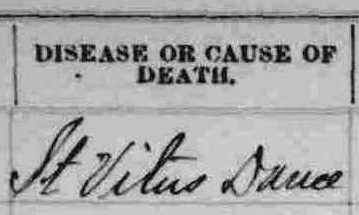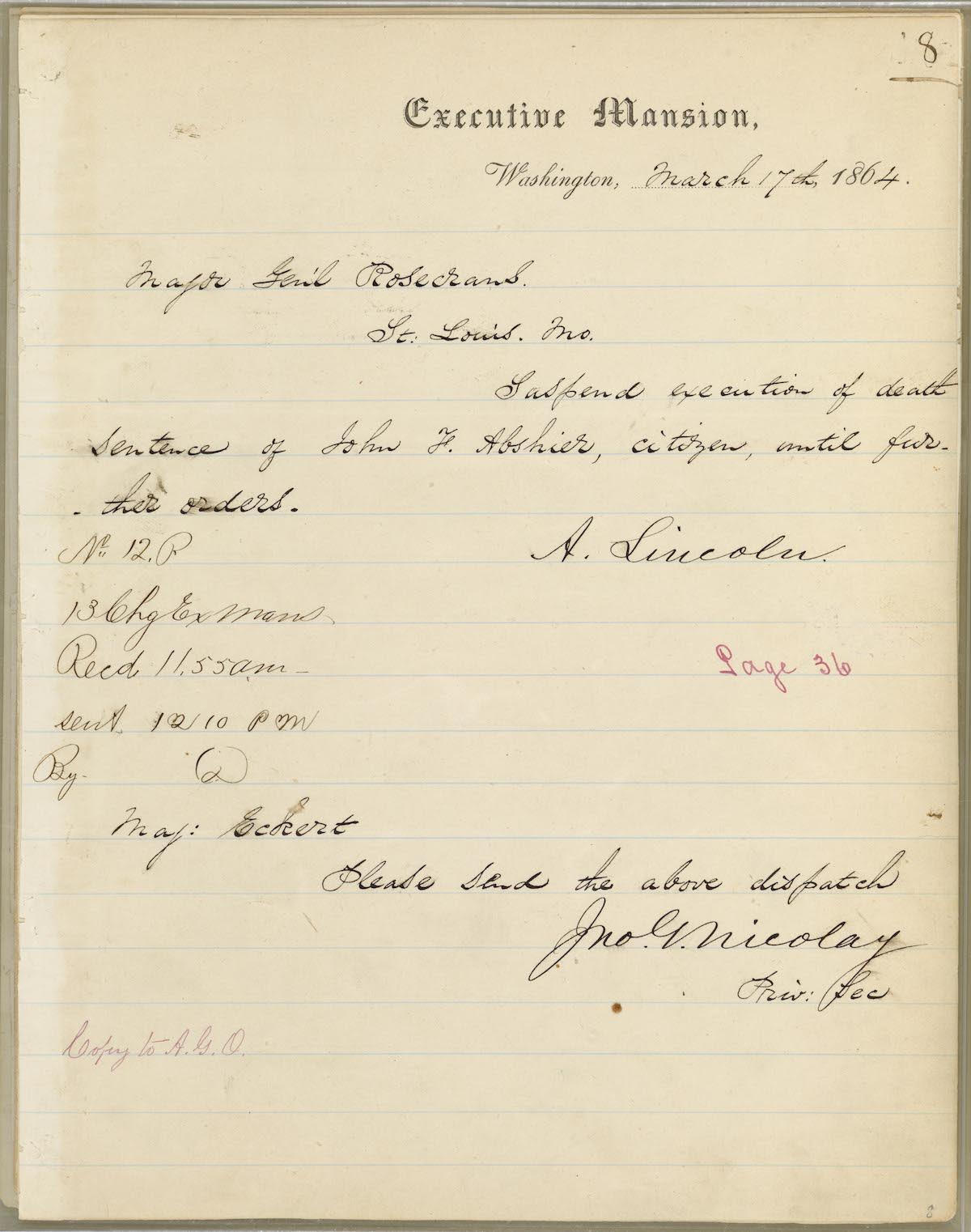The microfilm rooms at the libraries are filled with stories that captured the imagination of the nation for a few months, then vanished into the dustbins of history. Sometimes the supposed “strange events” were explained away and people lost interest. Sometimes there just stopped being anything new to say about a story and people moved on. Now and then a story will be go underground and re-emerge decades later with a life of its own and a whole new mythology surrounding it – for instance, everyone forgot about H.H. Holmes, the murderer in Devil in the White City, for decades, and when the story became famous again in the 21st century it now included several angles that had been thoroughly debunked in the 1890s, several bits that pulp writers had dreamed up in the 1940s, and some brand new outright fiction, as well. You see this pattern in a lot of crime, mystery, and paranormal tales.
But for every story that came back from underground, there are dozens that have yet to make a comeback, and seem like a missed opportunity for a perfectly good urban legend. Sometimes in the archives I’ll run into things that I can’t believe never returned to our national mythology. One of my favorites of these is the tale of Elizabeth Mund, the Vampire of St. Louis.
In 1864, as the civil war raged, St. Louis was a Union-controlled city in a Confederate state. Perhaps because of all the turmoil, and perhaps because it just wasn’t that big of a city yet, but local coverage in newspapers there was scarce compared to cities like New York or Chicago, where readers could pick from several papers. Some of the most detailed coverage available was in the Globe-Democrat, and even there local news was relegated to a couple of columns on page three. The rest was war news and advertisements.
But like most 1860s papers, they always covered local hangings in exhaustive detail. And in 1864, every time there was a hanging at the prison, a young Swiss woman named Elizabeth Mund would appear wanting to suck the blood of the hanged man, believing it would cure her of a nerve disease.
 Mund was twenty-three years old, a mother of three children, none of whom had survived infancy, was missing one eye, and was suffering from “the dancing heart,” which probably referred to St. Vitus’ Dance, a nerve disorder that causes a lot of twitching. It’s not a fatal disease, and usually goes away on it’s own after a while, and isn’t really even one of those diseases where the cures of the day were worse than the ailment (most of the remedies I could find were of the “take a cold shower and watch your diet” variety). Given her affliction and her recent history, it’s hard not to be sympathetic to Elizabeth, but it’s also easy to imagine her straining the bounds of your sympathy. It’s one thing to feel sorry for a person, and quite another for her to ask you to help her drink your recently-executed husband’s blood.
Mund was twenty-three years old, a mother of three children, none of whom had survived infancy, was missing one eye, and was suffering from “the dancing heart,” which probably referred to St. Vitus’ Dance, a nerve disorder that causes a lot of twitching. It’s not a fatal disease, and usually goes away on it’s own after a while, and isn’t really even one of those diseases where the cures of the day were worse than the ailment (most of the remedies I could find were of the “take a cold shower and watch your diet” variety). Given her affliction and her recent history, it’s hard not to be sympathetic to Elizabeth, but it’s also easy to imagine her straining the bounds of your sympathy. It’s one thing to feel sorry for a person, and quite another for her to ask you to help her drink your recently-executed husband’s blood.
On March 19, 1864, the Globe-Democrat broke her story with an article so wild that several papers around the country excerted it: “A Female Vampire – A Woman Wants to Suck the Blood of a Man Who Has Been Hung.”
Captain Bishop, the jailer, told the Globe Democrat that Elizabeth came into his office smiling and asking if it was true that a man named John Abshire, sentenced by court martial to be hanged. A friend of hers had apparently told her that her disease could be cured by wearing a bit of rope that had been used to hang a man around her neck, and Elizabeth, perhaps combining another old-world superstition and perhaps just deciding to take things even further, wanted to suck the hanged man’s blood.
Amused, Captain Bishop had to be the bearer of bad news (for her): Abshire’s sentence had been commuted. But he cheered her back up by telling her that another hanging was scheduled for the next month, in which a man would be hanged until he was “dead, dead, dead,” and that the jail physician would get her some of the blood.
Sure enough, on April 15, a murderer named Valentine Hansen was scheduled to be hanged. And Elizabeth Mund arrived at the jail, where she met with Mrs. Hansen, whom the press had taken to calling “the little woman in black.” Mrs. Hansen, naturally, was not amused by Elizabeth’s request. “The little woman in black indignantly spurned the blood-sucker,” the Globe-Democrat wrote, “and our informant says there was quite a war of words between the two women. The Vampire took her departure, and mingled with the crowd on the outside of the enclosure…she waited on the street with the feverish hope that her desire might be gratified.”
After the execution, the reporters found Elizabeth hanging around by the gates. “Her was was pale and cadaverous, her baleful blue eye (she has lost the sight of one eye) had the look of a hyena’s, and her lips protruded as if preparing to suck the blood from a man’s jugular vein. We questioned the vampire but could get no intelligible answer from her. She was watching the ponderous iron door of the jail, as if expecting to see the body of the murderer brought forth. Whether she succeeded in obtaining a portion of Hansen’s blood, we did not stay to see.”
It’s to be assumed that Mund was unsuccessful, because she showed up at another execution in August, when one William Jackson Livingston was hanged as a spy. “At an early hour,” the paper wrote, “the jail was visited by the inevitable Elizabeth Mund… she implored Marshall Coff, with tears in her eye (she has but one) to allow her to enter the jailyard and obtain a few drops of Livingston’s blood. The marshall, remembering her violent demonstrations at the execution of Hansen, told her she would be allowed to come in at twelve o’clock, when she could get as much blood as she wanted.”
This, however, was Marshall being tricky: the hanging was actually taking place at ten, and by noon the body was long gone.
How Mund reacted to the trick (or the paper’s snark about her missing eye) wasn’t recorded; the Globe said only that she’d left disappointed for the fifth or sixth time. Whether she’d really been at that many executions is hard to determine; lists of executions in Missouri that have been published over the years tend to be inaccurate and incomplete. The hangings of Abshire, Hansen and Livingston are the only ones I could find at which Mund was mentioned. And this seems to have been her last attempt; when two “bushwackers” were hanged a few weeks after Livingston, the Globe didn’t mention Mund at all, though they reported that around two thousand people crowded around the jail, climbing hills and trees to get a view.

Little can be found about Mund besides these handful of mentions; it’s quite possible that she simply got better and stopped bothering. It’s tempting to imagine that today every news outlet would have hounded her for more information: we’d critique every line she’d ever posted on social media, and we’d get updates on her activities every time an execution came up for years. But papers of 1864 were content to let her slink into obscurity, having suffered no greater indignity than a couple of cruel remarks about missing an eye (which was pretty lousy of the reporters, but considering that she was rooting for people to be executed and had the nerve to ask a widow-to-be for some of her husband’s blood, it could have been worse). Historically it’s tempting to wish that there was more data, but probably better that she was left alone.
Another person or two has seen one of the articles about her excerpted in digitized papers from 1864 and mentioned it, but there’s one aspect to her story that’s been forgotten, and really shouldn’t have been: the person who commuted Abshire’s sentence was none other than President Abraham Lincoln.
He probably never knew it, but in commuting the sentence, Lincoln had thwarted the efforts of a real life vampire.
So there was a kernel of truth in Abraham Lincoln: Vampire Hunter, after all. Who knew?
ADAM SELZER is a Chicago rideshare driver and and tour guide who writes mysteries and true crime books. He recent works include Mysterious Chicago and Just Kill Me, a novel about a ghost tour guide who makes places more haunted by killing people at them. His massive HH Holmes: The True Story of the White City Devil will be released in April. See him online at adamchicago.com


